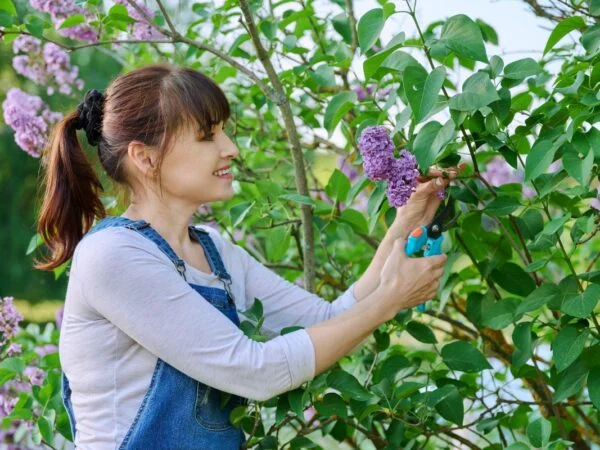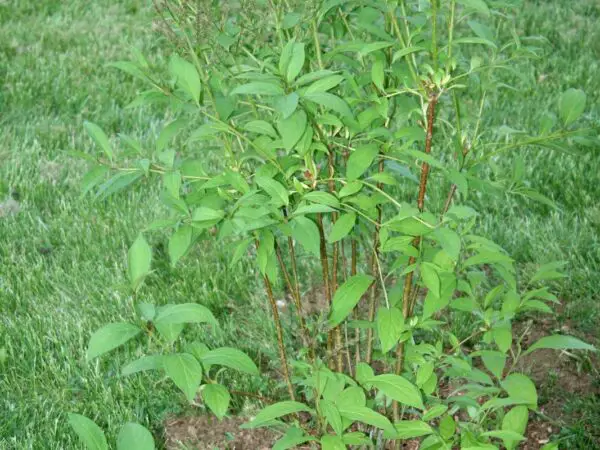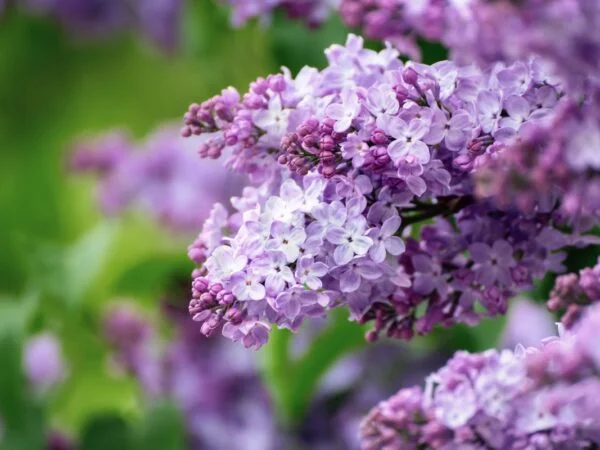Did you know that propagating a lilac bush from a cutting is an easy and cost-effective way for gardeners to expand their gardens with new plants and new shoots? In this guide, we will walk you through the simple steps to start a thriving lilac bush from just a clipping.
Starting a lilac bush from a cutting can be a rewarding experience for any gardening enthusiast. From selecting the right seed to nurturing it into a flourishing plant in your garden, we will cover everything you need to know in detail. Get ready to witness your lilac bush thrive and bloom with these expert tips and tricks for plants in your garden.
Key Takeaways
- Start Your Lilac Journey: Understand the basics of lilac propagation to successfully grow your lilac bush from a cutting.
- Timing Matters: Propagate lilacs at the right time for optimal success, usually in early summer.
- Prepare with Care: Properly prepare your cuttings by selecting healthy stems and removing excess leaves.
- Rooting Techniques: Explore different methods like water propagation, cutting, or soil rooting to encourage successful root growth.
- Plant with Precision: Plant your lilac cuttings in well-draining soil and provide adequate sunlight for healthy growth.
- Nurture Your Lilacs: Ensure proper care by watering regularly, protecting from harsh weather, and monitoring for any issues.
Understanding Lilacs
Growth Habits
Lilac bushes are deciduous shrubs that can reach heights of up to 15 feet (4.5 m). They typically bloom in spring, adding a burst of color to gardens.
- Lilacs are deciduous shrubs.
- They can grow up to 15 feet tall.
- Lilacs bloom in spring.
Varieties
Common lilac varieties, like Syringa vulgaris, come in various colors, including purple and white. Each variety offers different levels of fragrance intensity.
- Syringa vulgaris is a popular lilac variety.
- Lilacs come in purple and white hues.
- Fragrance intensity varies among lilac varieties.
Climate Needs
For optimal growth, lilacs thrive in temperate climates, requiring cold winters for dormancy and full sun exposure.
- Lilacs prefer temperate climates.
- Cold winters are essential for lilac dormancy.
- Full sun exposure is ideal for lilac growth.
Propagation Basics
Cuttings vs. Suckers
Starting lilac bushes from cuttings involves taking a piece of the stem or root and planting it to grow a new plant. On the other hand, suckers are shoots that grow from the base of the parent plant.
Advantages of starting from cuttings include genetic diversity, allowing for variations in color and fragrance. Conversely, starting from suckers maintains the exact characteristics of the parent plant.
Best Practices
When propagating lilac bushes, it is crucial to take cuttings from new growth as they have higher success rates in rooting. Ensure you use a proper soil mixture, well-draining yet moisture-retentive, to support healthy root development.
To increase your chances of successful propagation, consider using rooting hormone on the cut ends before planting them in soil. This hormone stimulates root growth and enhances the overall rooting process.
Tools Required
Gather essential tools such as pruning shears for cleanly cutting the lilac stems. Prepare pots filled with potting soil, ensuring it's well-draining to prevent waterlogging which can lead to rotting.
Have rooting hormone on hand to promote root development in the cuttings. Utilize clear plastic bags to create a mini greenhouse effect, maintaining humidity levels ideal for root formation.
Timing for Propagation
Best Seasons
Late spring or early summer are the optimal seasons for taking lilac cuttings. These periods provide ideal conditions for the cuttings to root successfully. It is crucial to avoid taking cuttings during extreme weather conditions such as excessive heat or cold.
Consider the growth cycle of lilacs when starting from cuttings. Understand that it takes time for the cuttings to root and establish themselves in the soil. Once the roots have developed well, plan for transplanting them into their permanent location.
Preparing Cuttings
Selection Criteria
Select healthy branches with tender new growth for softwood cuttings. Opt for branches free from disease or damage, ensuring at least two to three leaves at the top.
Cutting Technique
Cut 4- to 6-inch lengths of new growth for successful propagation. Strip bottom leaves to promote root growth, using a sharp, clean tool for precise cuts.
Healing Process
Allow cuttings to callus over before planting to prevent rotting. Ensure proper healing time post-cutting before planting softwood cuttings.
Rooting Methods
Soil Rooting
To start a lilac bush from a clipping, prepare a well-draining soil mixture by combining potting soil with sand and perlite. This mixture promotes root development in the cuttings. Create individual planting holes in the soil for each cutting to ensure proper growth conditions.
Water Rooting
Consider water rooting as an alternative method for lilac propagation. Place the cuttings in a glass jar filled with water to encourage root formation. Regularly check the progress of root development in the water to ensure successful propagation.
Hormone Use
When starting a lilac bush from a clipping, dip the base of the cuttings in rooting hormone to stimulate root growth effectively. Understanding the significance of rooting hormone in enhancing propagation success is crucial. Always adhere to the instructions provided for the correct application of rooting hormone to maximize results.
Planting Lilac Cuttings
Soil Preparation
To start, prepare the potting mix by combining soil, sand, and perlite in equal parts. This mixture provides good drainage for the lilac cuttings. Ensure the soil is lightly moist but not waterlogged before planting the cuttings to prevent rotting. Throughout the rooting process, maintain proper moisture levels in the soil to support healthy growth.
Positioning Cuttings
When planting, ensure that the leaves of each cutting do not touch each other as this can lead to mold or disease. Adequate spacing between cuttings promotes air circulation, reducing the risk of fungal infections. Position the cuttings in a warm location with indirect sunlight to create optimal conditions for rooting.
Watering Needs
For successful growth, water the cuttings daily to keep the soil slightly moist but not saturated. Overwatering can lead to root rot, so it's crucial to strike a balance in watering frequency. Regularly monitor the soil moisture levels and adjust watering accordingly to prevent issues with drying out or excessive wetness.
Caring for New Lilacs
Sunlight Requirements
To start a lilac bush from a clipping, ensure it initially receives indirect light to root properly. Once roots develop, transition to bright, indirect light for healthy growth. Adequate light is crucial.
Watering Schedule
Maintain a consistent watering schedule for the lilac cuttings to thrive. Adjust watering frequency based on soil moisture levels to prevent overwatering or underwatering. Avoid letting the soil dry out completely between waterings.
Fertilization Strategy
Refrain from fertilizing cuttings until they have rooted securely in the soil. After rooting, use a diluted, balanced fertilizer to promote healthy growth. Follow recommended fertilization guidelines for young lilac plants.
Troubleshooting Common Issues
Pest Management
Keep an eye on cuttings for aphids or spider mites, and act quickly to prevent damage. Utilize natural remedies or insecticidal soap for effective pest control.
Disease Prevention
Prevent diseases by using clean tools when taking cuttings. Ensure proper air circulation around the cuttings to reduce humidity levels, and avoid overwatering to prevent fungal infections.
Growth Challenges
Prepare for challenges such as slow rooting or wilting of cuttings. Adjust watering or light conditions to troubleshoot issues effectively. Consult gardening experts for persistent growth challenges.
Growing Lilacs from Suckers
Identification
Identify rooted cuttings by observing new growth. Look for signs of healthy, vigorous growth in established roots. Differentiate between rooted and unrooted cuttings for transplanting.
Separation Process
Separate rooted cuttings carefully to avoid damaging delicate roots. Gently tease apart roots if multiple cuttings are in the same pot. Handle separated cuttings with care to minimize transplant shock.
Transplanting Suckers
Transplant suckers once they have developed roots. Choose a suitable location with well-draining soil for transplanting. Ensure proper care post-transplant to promote healthy growth.
Closing Thoughts
In your quest to propagate lilacs successfully, you've gained a solid understanding of the process, from selecting the right cuttings to caring for your new plants. Remember, timing is crucial, and attention to detail in each step will set you up for triumph. By following these guidelines diligently, you increase your chances of growing beautiful lilac bushes that will adorn your garden with their vibrant blooms.
Now that you have the tools and knowledge at hand, it's time to roll up your sleeves and embark on this rewarding journey of lilac propagation. Put your newfound expertise into action, experiment with different methods, and watch as your garden flourishes with these stunning flowering shrubs. Share your successes and challenges with fellow gardening enthusiasts to foster a community of growth and learning.
Frequently Asked Questions
How can I start a lilac bush from a clipping?
To start a lilac bush from a cutting, follow these steps:
- Take a 4- to 6-inch cutting in late spring or early summer.
- Remove the lower leaves and dip the cut end in rooting hormone.
- Plant the cutting in well-draining soil and keep it moist.
Is it better to propagate lilacs from cuttings or suckers?
Propagating lilacs from cuttings is more reliable than using suckers. Cuttings allow you to clone specific plants with desirable traits, while suckers may not always retain the same characteristics as the parent plant.
When is the best time for propagating lilacs?
The best time to propagate lilacs is in early summer when the plant is actively growing. This period provides optimal conditions for successful root development on the cuttings.
How do I care for newly planted lilac cuttings?
To care for new lilac cuttings:
- Keep the soil consistently moist but not waterlogged.
- Provide partial shade to prevent excessive stress on the young plants.
- Protect them from harsh weather conditions like strong winds or extreme temperatures.
What are common issues when growing lilacs from cuttings?
Common issues when growing lilacs from cuttings include:
- Root rot due to overwatering.
- Failure of the cutting to root properly.
- Disease or pest infestations affecting young plants. Remember to monitor your lilac cuttings closely and address any issues promptly.
Image Source: Paid image from CANVA





